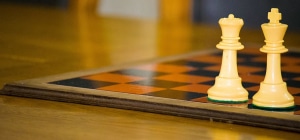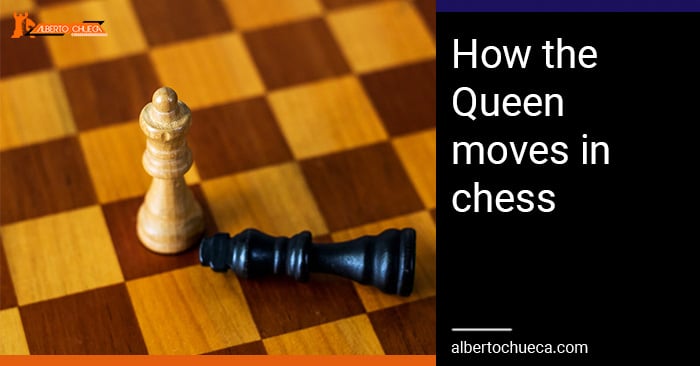Table of Contents
How does the Queen move in chess?
We all know the chess King is the most important chess piece on the board. But we also know the King is not the most valuable piece on the board as far as mobility goes. Who is the most valuable piece on the board? I present to you, the Queen! When we look at comparative piece value on the chessboard, the pawn = 1, Bishop and Knight = 3, Rook = 5, and Queen = 9. No wonder people make a fuss about losing their Queen! She is almost twice as valuable as the piece behind her! In this article, we will be learning about how the Queen moves in chess, as well as other functions and facts about the lady. Enjoy!
The Chess Queen's Looks

We can see, compared to the King, the Queen is slightly shorter, which makes sense. Other than that, on most standard sets, there is not really a huge difference. The Queen's “headwear” is just different, probably to make the looks more distinct. Most chess sets, especially digital ones, emphasize the spikes on the hat.

This is one such example. The spikes are what makes the Queen so iconic compared to other chess pieces.
The Chess Queen's starting position
Just like the King, the Queen starts out on the back rank in the middle of the board. Her position is right next to the King. How do you tell where they go? Well, the King and Queen have to occupy a dark square or a light square each. There is a famous phrase that can aid you in remembering where the Queen goes, “the dress matches the shoes”. So assuming the Queen's shoes are the same color as she is, a White Queen would start on a light square, so the Black Queen would start on a dark square.
We see above. Because White's Queens are on the color that she herself represents, the King has to be on opposite colors. The White King is on a dark square, and the Black King is on a light square. We will next learn how the Queen moves in chess.
How the Queen moves in chess and her value
The Queen is by far the most special piece on the board. How she moves is extremely critical to know. She functions like the Rook and the Bishop combined. She can move in a straight line, like a Rook, and she can move in a diagonal, like a Bishop.
We can see above how much of the chessboard Queen control. That is a lot of squares on an open board! As we mentioned previously, the pawn = 1, the Knight/Bishop = 3, the Rook = 5, and the Queen is 9 points. You might wonder why, if the Queen is basically a Rook (5) and Bishop (3) combined, why is the Queen worth 9, not 8? One theory can be that one of the Bishop's weaknesses is that he can only control one shade (light or dark square) of the board at a time. Since the Queen can also move like a Rook, she can obviously control whatever color she so desires, unlike the Bishop. That may be the extra edge that gives the Queen 9 rather than 8. How the Queen moves in chess does give her a special advantage.
Special Chess rule: Pawn Promotion

There is a special rule as it pertains to chess, which is called “pawn promotion”. Now, why are we talking about a pawn in an article about the Queen? You will see it! The rule with pawn promotion is that if/when a pawn reaches the other side of the board, they can turn into a Queen. They also have the ability under special circumstances to turn into a Rook, Bishop, or Knight, but 99% of the time it turns into the most valuable piece possible.
Once the b5-pawn reaches the b8 square, it turns into a Queen and will give White a winning edge with how the Queen moves in chess.
Strategies with the Queen: Opening
Well, we can make this very brief: minimize your Queen's activity in the opening. Why? Well, think about it this way. Your Queen is your most valuable asset, right? When any piece other than another fellow Queen attacks your Queen, you are almost always obligated to move it. In the opening, we should be focusing on developing pieces and castling. If our Queen is constantly being chased around, we don't have a lot of time to develop our game in an ideal manner!
How the Queen moves in chess: tactics
The Queen can be very effective in the middlegame and endgame. Not only is she just a valuable piece to have around, but her long-range mobility can also help you catch some players off guard tactically!
In the position above, the Queen's functions are used to White's advantage. White goes Qc4+, note that move is along with a file, like a Rook. Using the diagonal function, the Queen is both checking the Black King on g8, and hitting the Rook on a6. As a result, when Black protects their King (which is required, as if your King is in check, you must take care of your King), the Queen will swoop in and snag the Rook on a6. The perfect functioning of the Queen!






